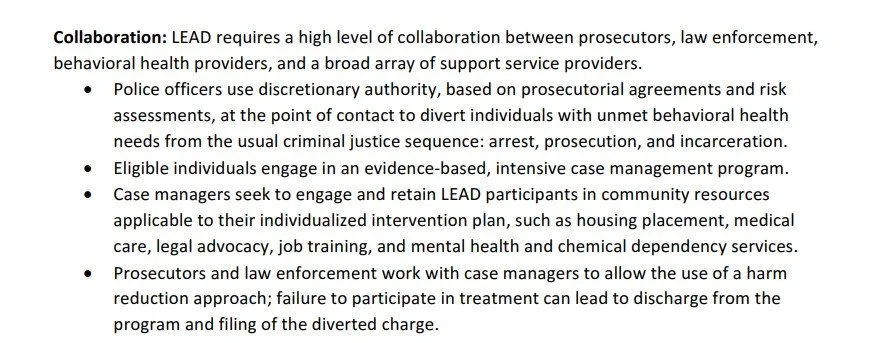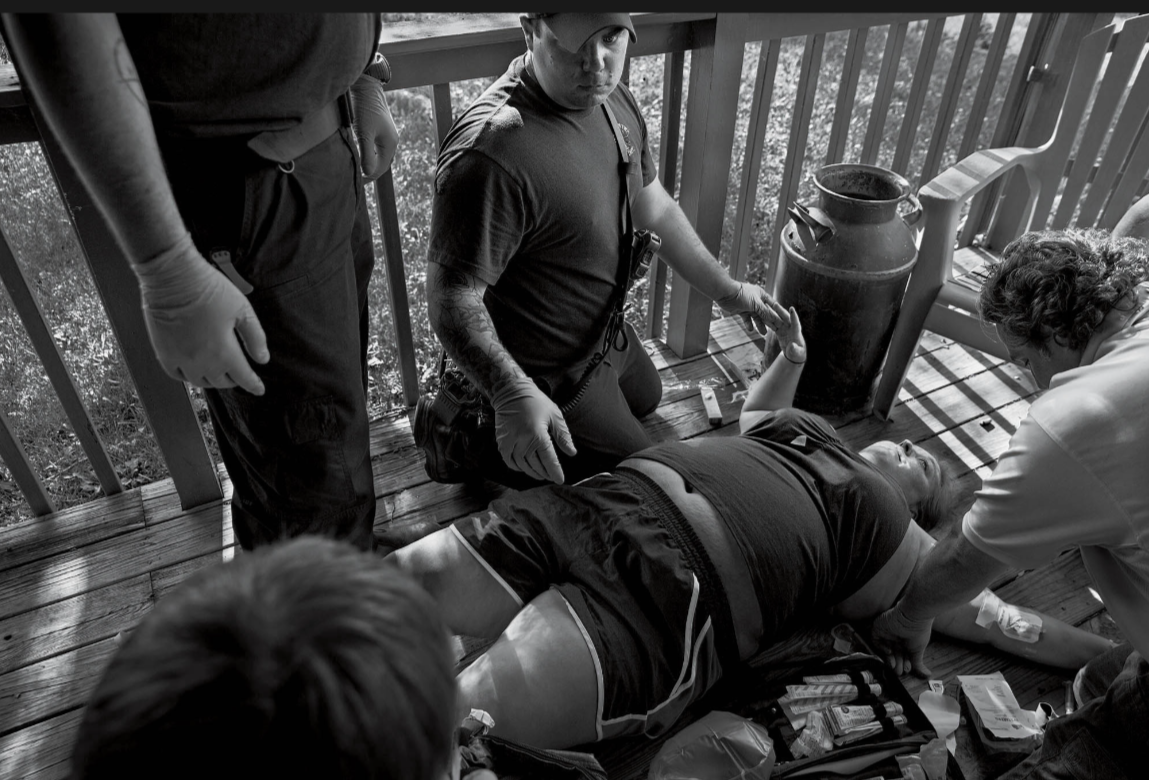
Work together
Communities are often resource rich and coordination poor. Resources—financial, human, programmatic—are precious, and given the extent of this crisis, we cannot waste them. Unlikely collaborators must learn to work together, communicate continuously, and think beyond the perceived boundaries of their role in the community. Well-intentioned providers need to work together across areas, which likely means moving beyond the borders of their institutions and traditional roles to create new relationships and pathways in order to provide coordinated services to those in need.
Work on multiple parts of the system simultaneously
Many efforts focus only on one part of the crisis. We cannot focus just on prescribing guidelines, just on naloxone distribution, just on increasing access to treatment, just on preventing diversion. We need to focus on them all, and all at once, because a multi-faceted problem requires a multi-faceted solution. Think of the response to a natural disaster: we don’t focus only on housing, or food, or infrastructure – all pieces need to come together. The same is true of the opioid crisis; preventing a fatal overdose through the administration of naloxone is important, but addressing the ongoing addiction requires a system approach.
Be unambiguous about the risks of prescription opioids
Let’s be clear: approximately 75 percent of heroin users started on the road to addiction with prescription drugs. Let’s change the conversation with patients from a footnote that prescription opioids can be dangerous if abused, to a frank discussion about how prescription opioids and heroin affect the brain and body in the same way.
Let’s tell patients and their family members that the majority of people who become addicted to prescription opioids were not engaged in drug-seeking behavior or recreational use, and were simply taking a medication to relieve pain as prescribed by their physician. Let’s use opioids when they are the only option or for palliative or cancer care. Let’s be appropriately afraid of prescription opioids and treat them like the lethal drug they can be.
Re-train the medical community
Physicians received misinformation about the risks and benefits of prescription opioids for treating chronic pain, and we know that changing practice takes time. However, we do not have the benefit of time with 44 individuals dying each day. Prescription guidelines are important, but physicians need to be re-trained in how they treat patients with all kinds of pain. There are effective alternatives for chronic pain management; providers need to use them and payers need to adequately reimburse for them.
Recognize that addiction is a chronic disease, and treat it accordingly
The people who are addicted and dying in this opioid crisis cross all boundaries. They include high school athletes, middle-aged women, and high-functioning executives. They are individuals, not some amorphous group beyond help. Indeed, addiction in any form is not a moral failing; it is a physical and psychological disease that must be managed over time like any other chronic disease. Recovery from addiction is long and painful, and the stigma around addiction only prevents people from getting the help they need.
The statistics are staggering: in 2014, 28,647 individuals died from a drug overdose involving some type of opioid, a 14 percent increase from 2013, already the highest year on record. But we can’t let them overwhelm us. For the parents who just buried their daughter who became addicted to opioids after a sports injury, the baby born dependent on opioids, or the suburban mother accidentally overdosing when she became addicted to prescription painkillers after a car accident, the statistics are irrelevant. But even though their pain is singular, working in isolation cannot be the solution; states and communities need to provide the infrastructure for success.
This resource provides an overview of options for patients who are prescribed a controlled substance medication and have lost access to their Healthcare Provider.
LEAD Program-LEAD® holds considerable promise as a way for law enforcement and prosecutors to help communities respond to public order issues stemming from unaddressed public health and human services needs -- addiction, untreated mental illness, homelessness, and extreme poverty -- through a public health framework that reduces reliance on the formal criminal justice system.
Law Enforcement Treatment Initiative
The goal of this initiative is to connect individuals suffering from substance use disorder with treatment options. Drug overdoses are now the number one accidental killer in the Commonwealth. It is our greatest public health challenge and our greatest public safety challenge.
MAT-Medication-assisted treatment saves lives while increasing the chances a person will remain in treatment and learn the skills and build the networks necessary for long-term recovery.
Naloxone is a medication that can reverse an overdose that is caused by an opioid drug. All Pennsylvanians can get naloxone at a local pharmacy using Pennsylvania's standing order prescriptions for naloxone
The Pennsylvania Substance Use Navigation (PA-SUN) Program is a new statewide initiative to enhance treatment options for patients with opioid use disorder (OUD) by increasing access to medication-assisted treatment (MAT) using Food and Drug Administration-approved medication for the treatment of OUD in Emergency Departments (EDs).
suboxone-accepts medicaid
-
• Change prescribing practices (dose, duration, reason for prescribing, ceiling)
• Change dispensing practices
• Prevent diversion
• Limit pharmaceutical production
-
Provide education for:
◦ Providers
◦ Individuals/families
◦ Law enforcement
-
• Taper patients from high dose, chronic use
• Educate patients about pain management
• Increase availability and reimbursement of alternative pain management therapies
• Benefits of this form:
o It helps prescribers and patients begin dialogue of substance use history.
o It may prevent inadvertently offering certain controlled substances to those who could be adversely affected.
What is it? Opioid vaccines are medical therapies designed to block opioids, such as heroin and fentanyl, from entering the brain or spinal cord, thus preventing addiction and other negative effects. While none are approved for use yet, they could be useful for at-risk individuals, patients in drug recovery programs, or first responders who might accidentally come into contact with deadly opioids that can be absorbed through the skin.















